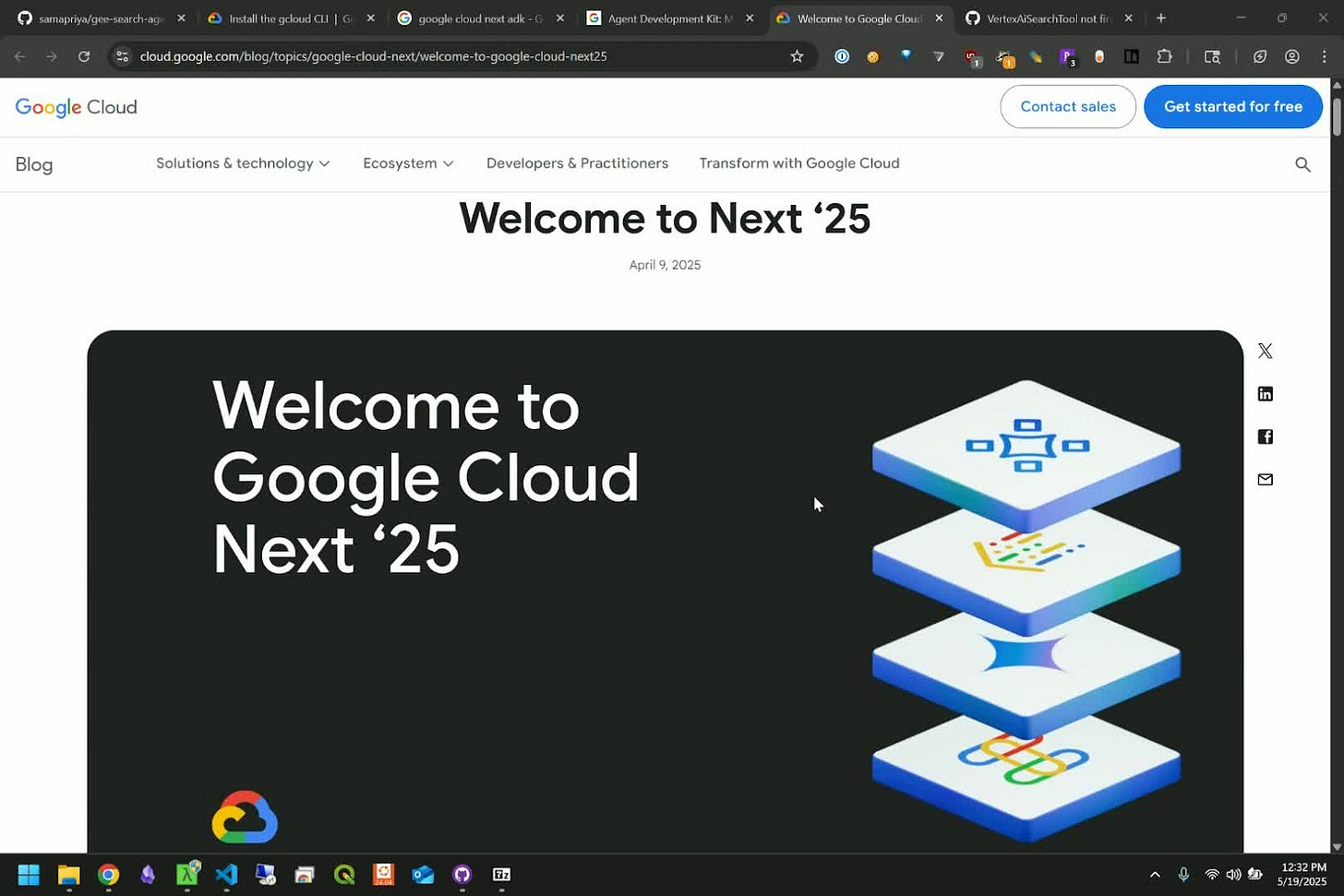Plug and Play Earth Engine Search Agents with Google’s Agent Development Kit
Harness the power of Google’s Agent Development Kit to spin up autonomous search agents for Earth Engine datasets in just a few lines of Python. Learn how to orchestrate multi‑agent workflows
Artificial intelligence isn’t just evolving it’s growing up. What began as single-shot systems that spat out predictions on demand is now morphing into something far more autonomous, far more ambitious. At the bleeding edge of this evolution lies a new class of systems: agentic AI. Most AI tools today are task-doers. They wait, quietly, for your prompt an image to label, a sentence to complete, a button to click and then respond with output. Fast. Impressive. But fundamentally reactive. Agentic systems are something else entirely. They reason. They plan. They act. And they don’t need you to micromanage every move. These agents don’t just wait for instructions, they anticipate them. They operate with intention, chaining actions across tools, APIs, and knowledge bases to pursue goals you define once, not fifteen times in a row. You don’t just tell them what to do, and this isn’t just a leap in functionality.
At the center of AI’s next frontier sits an unassuming powerhouse: Google’s Agent Development Kit ADK if you're into brevity and building things. Unveiled at Cloud NEXT 2025 with less fanfare than it deserved, ADK isn’t just another dev tool. It’s an open-source framework engineered to bring agentic AI out of the labs and into the hands of everyday developers. Think of it as a scaffolding for autonomy a modular, Python-native foundation for crafting agents that don’t just answer prompts, but collaborate, reason, and act in the real world with just a few lines of code.In short: it turns AI agents into something you can actually build, ship, and iterate on.
ADK joins the growing ecosystem of multi-agent frameworks (like Autogen, CrewAI, and smolagents) with its own approach to collaborative AI systems. It provides structured support for organizing multiple agents in hierarchical relationships, where a parent agent can coordinate specialized sub-agents through either predetermined workflows or dynamic, LLM-driven routing based on the task requirements. This structured approach to agent relationships offers a familiar programming paradigm within the multi-agent landscape.
Yes, it’s optimized for Gemini, but it plays just as nicely with open-source models, local runtimes, and bespoke infrastructure. You can spin up a lightweight agent on your laptop and then scale it to Vertex AI without rewriting a line (okay maybe a few extra lines).
You’ll see that in action soon. We dive into a real-world use case built on top of Google Earth Engine’s massive geospatial dataset catalog powered by ADK. It builds on the blog post by Eric Abelson and Kristopher Overholt which you can read here, whose project turns Earth Engine into a chat-driven exploration space by searching for keywords and then downloading the page to add to the model context. with multi-agent search against the Earth Engine main catalog.
To give credit where credit it due, this experiment with building a search agent into a Dataset explorer started with the wonderful experiments from the Google Science Team and a special thanks to Renee Johnston who created the first of many versions of this tool with vector and text embeddings to store and search for datasets and to return example code in geemap. You can find these and so many other experiments at the Earth Engine Community Repo
I am diving this into two parts you can learn about two different approaches of using ADK and explore how this can be improved the first one explains ADK and gets into the implementation using a live
The next bit is a different approach effectively connecting the search tool you see with the community catalog powered by Vertex AI agent builder in the backend used as a tool for one of the Agents. Yes its simple enough to build and yes this can help you thinking about ideas of how to play with these lego blocks.
Bonus: An Extra User Interface
To elevate the experience even further, we’ve wired up a custom frontend using Mesop, Google’s open-source, Python-native chat UI framework. The result? A smooth, developer-first interface talks to the ADK API. Think dark-mode, dropdowns, history tracking, and live results that you can explore, tweak, and iterate on.
As agentic AI steps out of the lab and into real‑world apps, Google’s ADK hands developers the very same building blocks that power next‑gen autonomy at scale. With modular, team‑based agents that reason, plan, and collaborate, you get an AI ecosystem that grows smarter the more you build on it. Whether you’re exploring terabytes of geospatial data, spinning up a research assistant, or orchestrating multi‑stage workflows, ADK gives you the scaffolding to dream bigger and ship faster.
The frontier of AI has never been more open, or more collaborative. So grab your favorite Python editor, pick your model of choice, and join the community in pushing agents from proof‑of‑concept to production reality.



